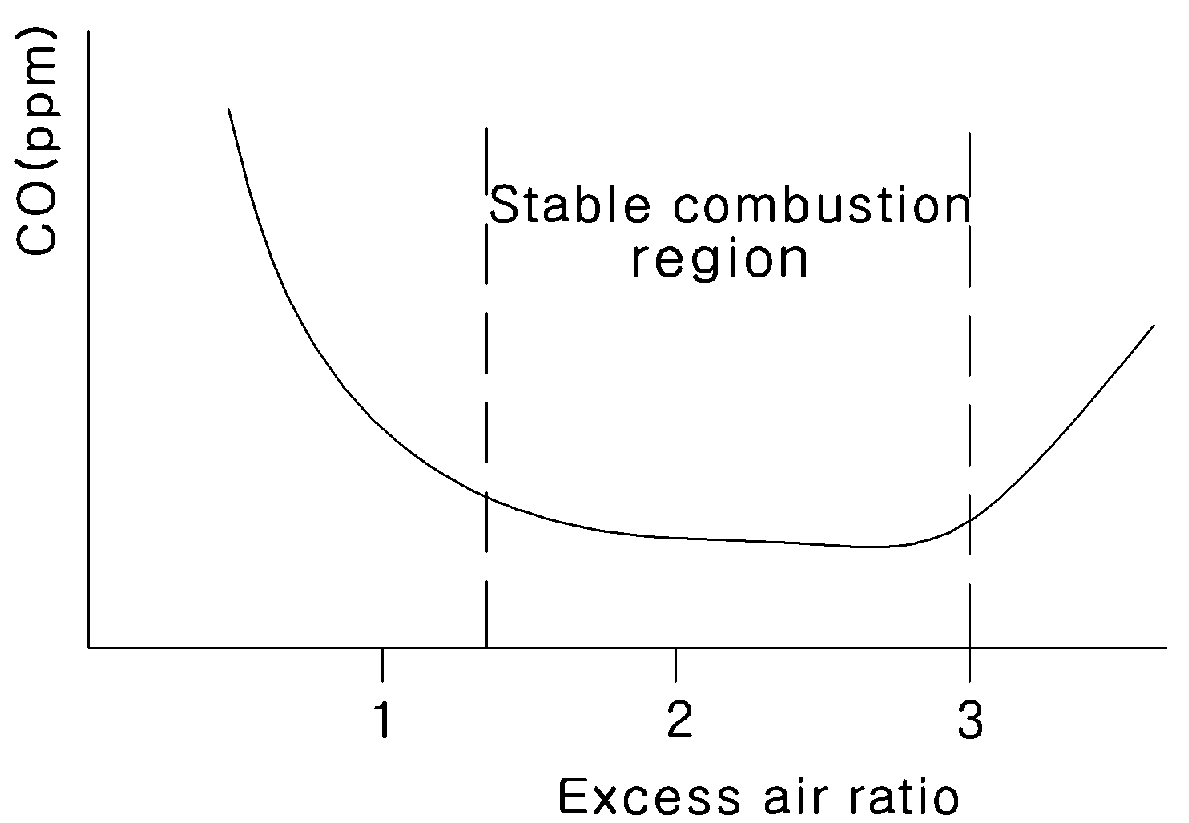Method for Maximum Efficiency of Non-Condensing Boiler
a non-condensing boiler and maximum efficiency technology, applied in the direction of heating types, electric controllers, instruments, etc., can solve the problems of inability to inhibit the corrosion of the boiler, incur expensive production costs, and cause corrosion, etc., to achieve easy assembly, prolong the durability, and reduce production costs. cost
- Summary
- Abstract
- Description
- Claims
- Application Information
AI Technical Summary
Benefits of technology
Problems solved by technology
Method used
Image
Examples
Embodiment Construction
[0016]Hereinafter, exemplary embodiments of the present invention will be described in detail with reference to the attached drawings.
[0017]In the brief description of the attached drawings, FIG. 1 shows a combustion characteristic curve (graphic relationship between an excess air ratio and carbon monoxide (CO)) in accordance with an exemplary embodiment of the present invention, and FIG. 2 is a graph plotting the relationship between the concentration of CO2 and a dew point temperature in accordance with an exemplary embodiment of the present invention.
[0018]FIG. 1 shows the range of an excess air ratio required for stable combustion of a burner (i.e. combustion when the amount of CO produced by unstable combustion is minimal).
[0019]Referring to FIG. 2, it is assumed that an oil fuel is used. When CO2 amounts to 10.5 vol %, condensed water is formed at about 43° C. When the excess amount of air is reduced, and CO2 in an exhaust gas amounts to 13.5 vol %, the condensed water is form...
PUM
 Login to View More
Login to View More Abstract
Description
Claims
Application Information
 Login to View More
Login to View More - R&D
- Intellectual Property
- Life Sciences
- Materials
- Tech Scout
- Unparalleled Data Quality
- Higher Quality Content
- 60% Fewer Hallucinations
Browse by: Latest US Patents, China's latest patents, Technical Efficacy Thesaurus, Application Domain, Technology Topic, Popular Technical Reports.
© 2025 PatSnap. All rights reserved.Legal|Privacy policy|Modern Slavery Act Transparency Statement|Sitemap|About US| Contact US: help@patsnap.com


